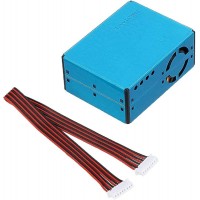Ideal Operational Amplifiers |
||||||||||||||||||||||||||||||||||||||
| As well as resistors and capacitors, Operational Amplifiers, or Op-amps as they are more commonly called, are one of the basic building blocks of Analogue Electronic Circuits. Operational amplifiers are linear devices that have all the properties required for nearly ideal DC amplification and are therefore used extensively in signal conditioning, filtering or to perform mathematical operations such as add, subtract, integration and differentiation. | ||||||||||||||||||||||||||||||||||||||
| An ideal Operational Amplifier is basically a three-terminal device which consists of two high impedance inputs, one called the Inverting Input, marked with a negative or "minus" sign, ( - ) and the other one called the Non-inverting Input, marked with a positive or "plus" sign ( + ). | ||||||||||||||||||||||||||||||||||||||
| The third terminal represents the op-amps output port which can both sink and source either a voltage or a current. In a linear operational amplifier, the output signal is the amplification factor, known as the amplifiers gain ( A ) multiplied by the value of the input signal and depending on the nature of these input and output signals, there can be four different classifications of operational amplifier gain. | ||||||||||||||||||||||||||||||||||||||
|
Current – Current "in" and Current "out" Voltage – Voltage "in" and Voltage "out" Transconductance – Voltage "in" and Current "out" Transresistance – Current "in" and Voltage "out" |
||||||||||||||||||||||||||||||||||||||
| Since most of the circuits dealing with operational amplifiers are voltage amplifiers, we will limit the tutorials in this section to voltage amplifiers only, (Vin and Vout). | ||||||||||||||||||||||||||||||||||||||
| The amplified output signal of an Operational Amplifier is the difference between the two signals being applied to the two inputs. In other words the output signal is a differential signal between the two inputs and the input stage of an Operational Amplifier is in fact a differential amplifier as shown below. | ||||||||||||||||||||||||||||||||||||||
Differential Amplifier |
||||||||||||||||||||||||||||||||||||||
| The circuit below shows a generalized form of a differential amplifier with two inputs marked V1 and V2. The two identical transistors TR1 and TR2 are both biased at the same operating point with their emitters connected together and returned to the common rail, -Vee by way of resistor Re. | ||||||||||||||||||||||||||||||||||||||
|
||||||||||||||||||||||||||||||||||||||
|
Ideal Operational Amplifiers also have one output (although there are ones with an additional differential output) of low impedance that is referenced to a common ground terminal and it should ignore any common mode signals that is, if an identical signal is applied to both the inverting and non-inverting inputs there should no change to the output. However, in real amplifiers there is always some variation and the ratio of the change to the output voltage with regards to the change in the common mode input voltage is called the Common Mode Rejection Ratio or CMRR.
|
||||||||||||||||||||||||||||||||||||||
| Operational Amplifiers on their own have a very high open loop DC gain and by applying some form of Negative Feedback we can produce an operational amplifier circuit that has a very precise gain characteristic that is dependant only on the feedback used. An operational amplifier only responds to the difference between the voltages on its two input terminals, known commonly as the "Differential Input Voltage" and not to their common potential. Then if the same voltage potential is applied to both terminals the resultant output will be zero. An Operational Amplifiers gain is commonly known as the Open Loop Differential Gain, and is given the symbol (Ao). | ||||||||||||||||||||||||||||||||||||||
Equivalent Circuit for Ideal Operational Amplifiers |
||||||||||||||||||||||||||||||||||||||
|
|
||||||||||||||||||||||||||||||||||||||
Op-amp Idealized Characteristics |
||||||||||||||||||||||||||||||||||||||
|
||||||||||||||||||||||||||||||||||||||
| From these "idealized" characteristics above, we can see that the input resistance is infinite, so no current flows into either input terminal (the "current rule") and that the differential input offset voltage is zero (the "voltage rule"). It is important to remember these two properties as they will help us understand the workings of the Operational Amplifier with regards to the analysis and design of op-amp circuits. | ||||||||||||||||||||||||||||||||||||||
| However, real Operational Amplifiers such as the commonly available uA741, for example do not have infinite gain or bandwidth but have a typical "Open Loop Gain" which is defined as the amplifiers output amplification without any external feedback signals connected to it and for a typical operational amplifier is about 100dB at DC (zero Hz). This output gain decreases linearly with frequency down to "Unity Gain" or 1, at about 1MHz and this is shown in the following open loop gain response curve. | ||||||||||||||||||||||||||||||||||||||
|
|
||||||||||||||||||||||||||||||||||||||
| From this frequency response curve we can see that the product of the gain against frequency is constant at any point along the curve. Also that the unity gain (0dB) frequency also determines the gain of the amplifier at any point along the curve. This constant is generally known as the Gain Bandwidth Product or GBP. | ||||||||||||||||||||||||||||||||||||||
| Therefore, GBP = Gain x Bandwidth or A x BW. | ||||||||||||||||||||||||||||||||||||||
| For example, from the graph above the gain of the amplifier at 100kHz = 20dB or 10, then the GBP = 100,000Hz x 10 = 1,000,000. | ||||||||||||||||||||||||||||||||||||||
| Similarly, a gain at 1kHz = 60dB or 1000, therefore the | ||||||||||||||||||||||||||||||||||||||
| GBP = 1,000 x 1,000 = 1,000,000. The same!. | ||||||||||||||||||||||||||||||||||||||
| The Voltage Gain (A) of the amplifier can be found using the following formula: | ||||||||||||||||||||||||||||||||||||||
|
|
||||||||||||||||||||||||||||||||||||||
| and in Decibels or (dB) is given as: | ||||||||||||||||||||||||||||||||||||||
|
|
||||||||||||||||||||||||||||||||||||||
An Operational Amplifiers Bandwidth |
||||||||||||||||||||||||||||||||||||||
|
|
||||||||||||||||||||||||||||||||||||||
| Here we have used the 40dB line as an example. The -3dB or 70.7% of Vmax down point from the frequency response curve is given as 37dB. Taking a line across until it intersects with the main GBP curve gives us a frequency point just above the 10kHz line at about 12 to 15kHz. We can now calculate this more accurately as we already know the GBP of the amplifier, in this particular case 1MHz. | ||||||||||||||||||||||||||||||||||||||
Example No1. |
||||||||||||||||||||||||||||||||||||||
| Using the formula 20 log (A), we can calculate the bandwidth of the amplifier as: | ||||||||||||||||||||||||||||||||||||||
|
37 = 20 log A therefore, A = anti-log (37 ÷ 20) = 70.8 GBP ÷ A = Bandwidth, therefore, 1,000,000 ÷ 70.8 = 14,124Hz, or 14kHz |
||||||||||||||||||||||||||||||||||||||
| Then the bandwidth of the amplifier at a gain of 40dB is given as 14kHz as previously predicted from the graph. | ||||||||||||||||||||||||||||||||||||||
Example No2. |
||||||||||||||||||||||||||||||||||||||
| If the gain of the operational amplifier was reduced by half to say 20dB in the above frequency response curve, the -3dB point would now be at 17dB. This would then give the operational amplifier an overall gain of 7.08, therefore A = 7.08. | ||||||||||||||||||||||||||||||||||||||
| If we use the same formula as above, this new gain would give us a bandwidth of approximately 141.2kHz, ten times more than at the 40dB point. It can therefore be seen that by reducing the overall "open loop gain" of an operational amplifier its bandwidth is increased and visa versa. In other words, an operational amplifiers bandwidth is proportional to its gain. Also, this -3dB point is generally known as the "half power point", as the output power of the amplifier is at half its maximum value at this value. | ||||||||||||||||||||||||||||||||||||||
Operational Amplifiers Summary |
||||||||||||||||||||||||||||||||||||||
| We know now that an Operational amplifiers is a very high gain DC differential amplifier that uses one or more external feedback networks to control its response and characteristics. We can connect external resistors or capacitors to the op-amp in a number of different ways to form basic "building Block" circuits such as, Inverting, Non-Inverting, Voltage Follower, Summing, Differential, Integrator and Differentiator type amplifiers. | ||||||||||||||||||||||||||||||||||||||
|
|
|
||||
|
In the next tutorial about Operational Amplifiers, we will use negative feedback connected around the op-amp to produce a standard closed-loop amplifier circuit called an Inverting Amplifier circuit that produces an output signal which is 180o "out-of-phase" with the input.
|











